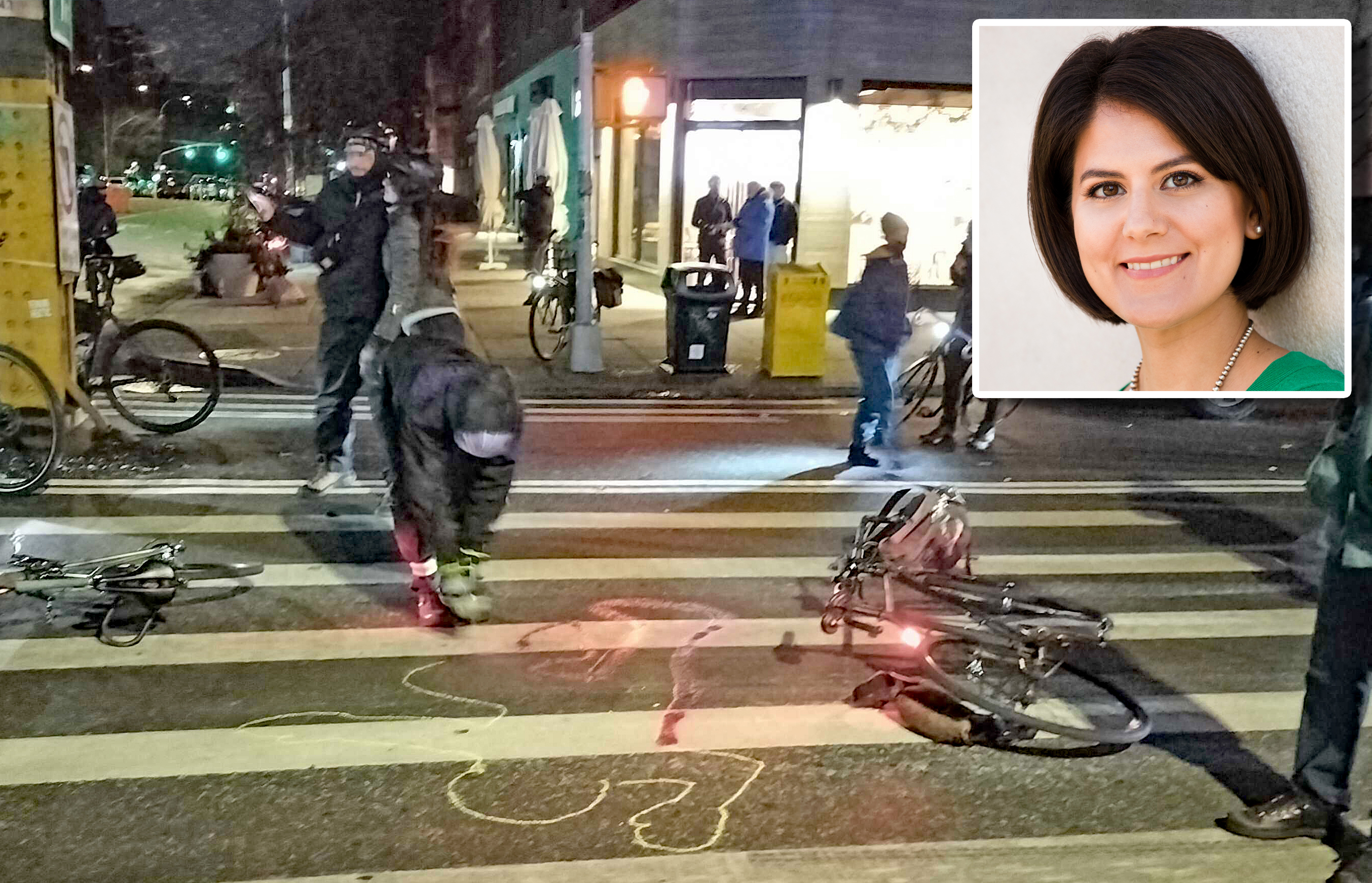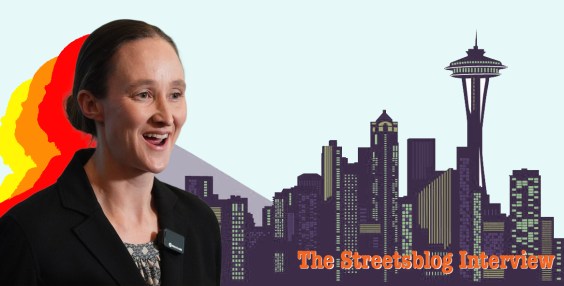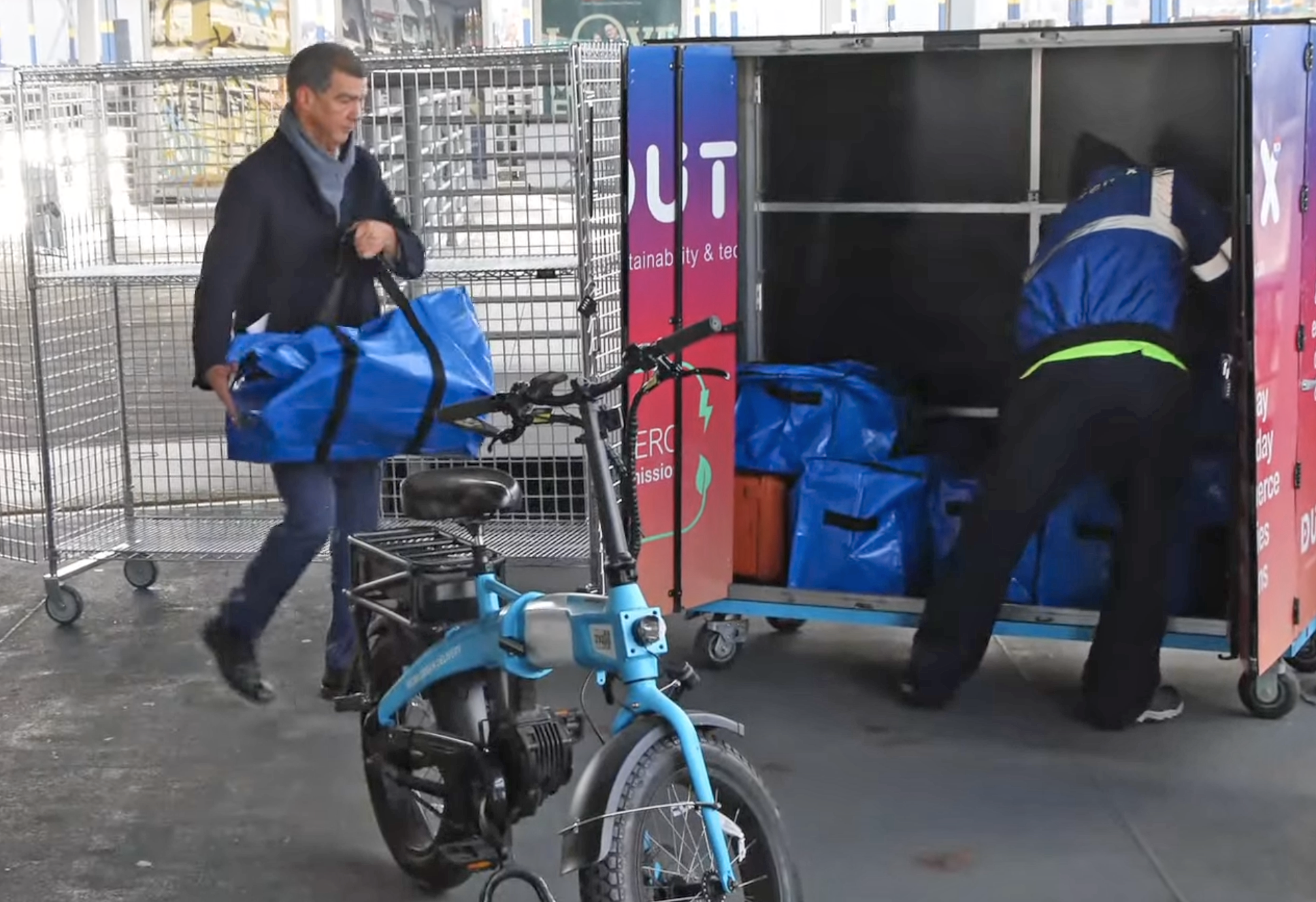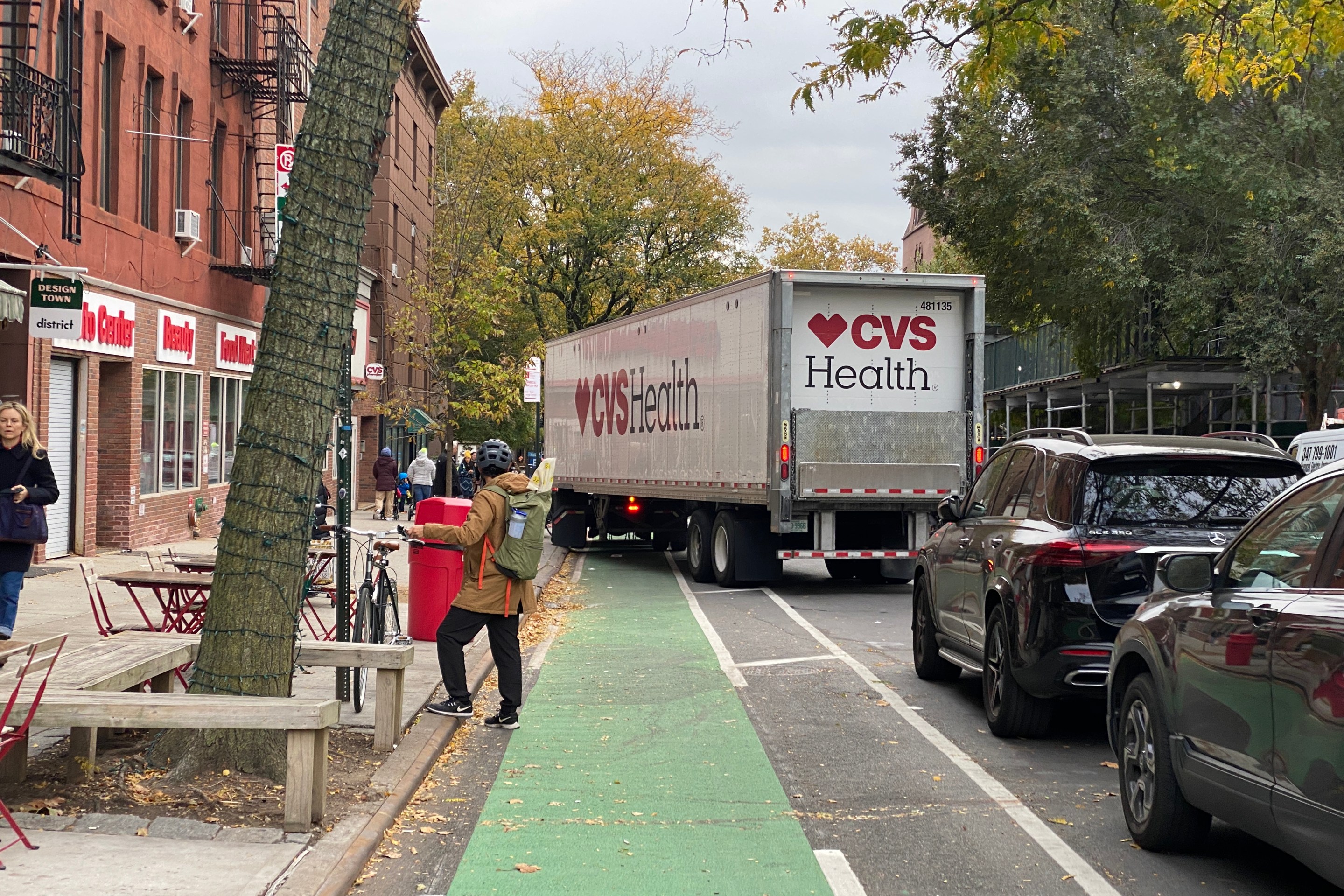
ALBANY — The next battle for good bike lanes in New York City might actually be happening 150 miles upriver.
Street safety advocate Dorcey Applyrs has just won the Democratic primary for Albany mayor, a victory that is tantamount to election in the blue capital. And Applyrs (pronounced up-LEARS) is already talking up livable streets, reminding voters that “traffic crashes are a public health issue” and plotting how she’ll use a record-breaking $400-million infusion from Gov. Hochul to make Albany more walkable.
“I’m looking at some of our community-centric spaces, like Washington Park and downtown, and thinking about … how we imagine Albany to be more walkable and bikeable,” she told Streetsblog on a stroll through Olmsted and Vaux’s Gilded Age Washington Park, about a 10-minute walk from the Capitol.
So why does a mayoral election in an upstate city matter to New York City residents?
It’s simple: State legislators love their cars — and the vast majority use them to speed directly from their homes directly into the parking lot below Empire State Plaza, directly accessible by I-787. Once in Albany, they use their cars to travel distances so short that it confounds even the rules of Euclidean geometry.
New York’s state capital is built for the car and that is how it is experienced by our lawmakers, so it’s no wonder that they think a great city is one with lots of wide roads, no traffic and lots of parking (and 29 percent of Albany’s land mass is parking).
Around the Capitol there are few bike lanes, poor wayfinding, and sidewalks that disappear into underground parking garages. Even in peak legislative session when the weather is warm, the days long, and restaurants busy with fundraisers, you can go blocks passing only a soul or two on foot.
And despite the fact that Albany is a waterfront city, there’s limited access to the Hudson. The Albany Skyway is an elevated linear park for pedestrians and cyclists with river views, converted from an underused ramp. But it’s only half a mile long.
All of this means that Albany is ripe for change.
Applyrs, the Chief City Auditor and a former Council member, became active in street safety issues after a 7-year-old boy was killed crossing the road at a housing complex in 2012. The death prompted Applyrs to introduce legislation to lower the residential speed limit to 25 miles per hour — only to learn that state approval is needed to lower speed limits in cities.
After winning the right, Albany finally did lower its speed limit to 25 earlier this year. And the city also now has 20 school zone speed cameras. Crashes are down compared to the first three months of 2024 and crashes involving injury have dropped from 146 to 93.
Nonetheless, Albany still has “a speeding epidemic,” she said, so she supports “more speed humps, lowering the speed limit, and while some people aren't in favor of it, enforcement.” She also likes road diets, more bicycle lanes, signage, public education, and more leading pedestrian intervals at crossings.
It was interesting to talk about this as we walked through Washington Park. At one point, a car driver raced through, and Applyrs put out her arm protectively. The park is an Albany jewel, but it’s also "a pass-through for traffic and oftentimes people are speeding through,” she said.
Legislators and car dependency
Legislators, she said, are just as car dependent as regular Albany residents. The fact that they get around by car, she said, “creates a disconnect with interacting with Albany as a city. … As mayor, I would really want to have them be a part of our city in a way that is not about going into the Capitol to make legislation, but also getting a flavor and feel for the residents and the businesses that make Albany great.”
Since 2022, the net number of locally owned retail businesses decreased by 23, and about 5,000 fewer state workers walk Albany streets, according to the Downtown Albany Business Improvement District.
No plan to revitalize retail, Applyrs said, can work without thinking about pedestrian access. “[Store] owners are really asking the city to make places like downtown more pedestrian-friendly so that people want to come down and shop.”
Lawmakers, she said, are “compelled to just come here, do their business, and go back to a hotel or an apartment. We have to do a better job telling our stories so that our legislators have a better feel for the city that they live in. … There are so many gems here, so many great restaurants and experiences and historic landmarks that people don’t know about.”
One idea, Applyrs said, is car-free streets.
“I think there are a lot of opportunities including side streets that are underutilized,” she said.
Championing Albany’s potential?
Earlier this year, Gov. Hochul announced a $400-million plan to revitalize the capital city — $150 million of which will fund new connections between Nelson Rockefeller’s Empire State Plaza with the surrounding community. Another $40 million will go to the state Department of Transportation to study how to reimagine the 1960s eyesore I-787 and enhance access to the Hudson River.
And $200 million will go to plan projects that “reinvigorate commercial corridors, strengthen small businesses, promote housing growth, and revitalize underutilized real estate and open spaces.”
Applyrs said she would use the $200 million to address traffic jams between cars and buses and increase car-free streets. Public engagement kicked off this month.
"The upcoming state investment and strong city leadership give us a real chance to build attractions and housing that create a vibrant, walkable, bikeable city that will draw new residents and businesses,” said Anne Savage, executive director of the New York Bicycling Coalition.
Sitting on a park bench, Applyrs said she visited Albany’s sister city of Nijmegen in the Netherlands with an Albany delegation last year, and noticed the people on bikes and not in cars. “A lot of their streets are blocked off, conducive to supporting business or bringing families out for recreation. I would like to leverage that sister city relationship to talk about how we can transform some of what we're seeing here in Albany. We need more pedestrian-friendly spaces so that people can actually access the businesses.”
That, in turn, could bring legislators out into the streets. If you build it, they might come. And then go back and fix their own towns and cities.
Amy’s Albany Addenda

This reporter noticed an asphalt driveway being put down in West Lawn, on the west side of the capitol complex. A peek through the fencing reveals that it will lead directly to the Capitol’s Western entrance.
A spokesperson for the Office of General Service said the State Police needed the cut and the new driveway because the eastern approach to the Capitol is undergoing a $72-million renovation.
During the eastern approach work, “the existing secure entrance there will be unavailable" so a new temporary entrance "will be used by State Police’s Protective Services Unit.”
That unit provides security for Gov. Hochul, Assembly Speaker Carl Heastie, Senate Majority Leader Andrea Stewart-Cousins, and Attorney General Letitia James — all of whom will now be driven into the Capitol via the new asphalt driveway.
The new driveway will be removed upon completion of the eastern project — in 2028.
"It seems a little excessive," one Assembly member told CBS 6.






